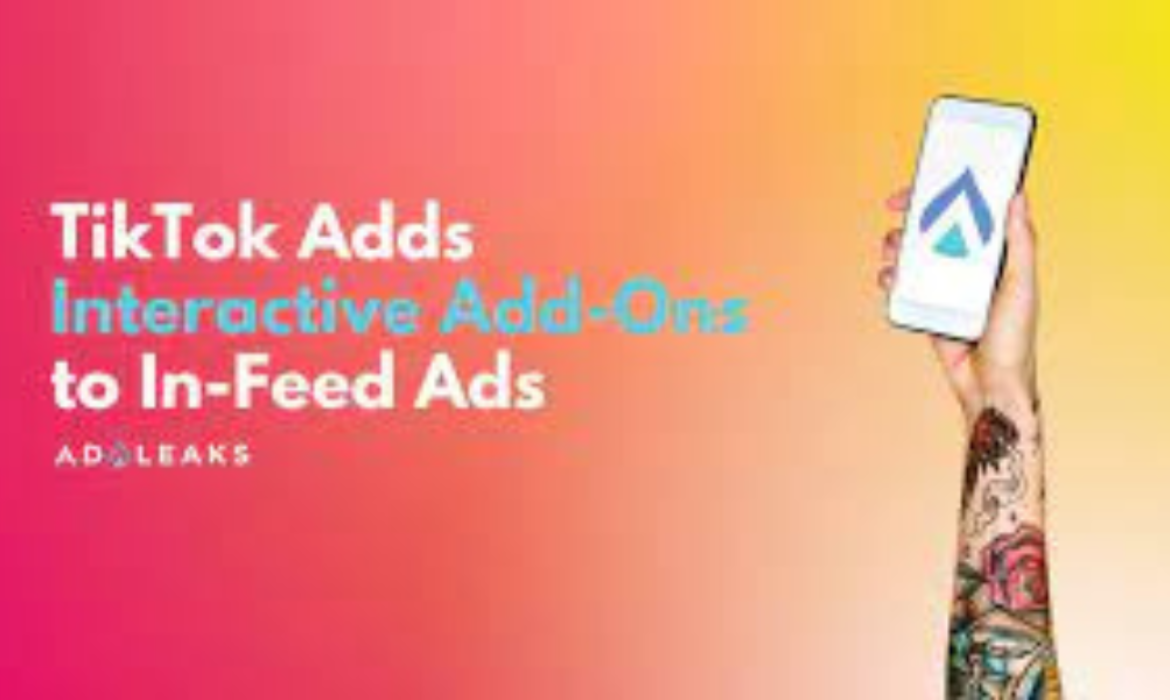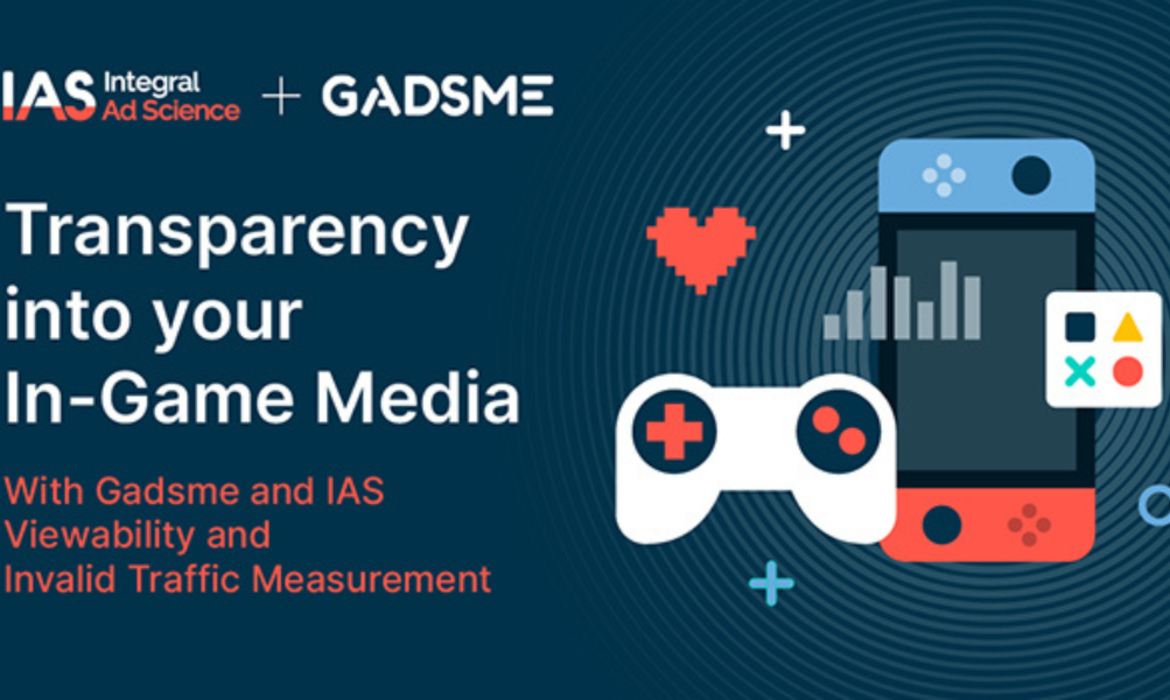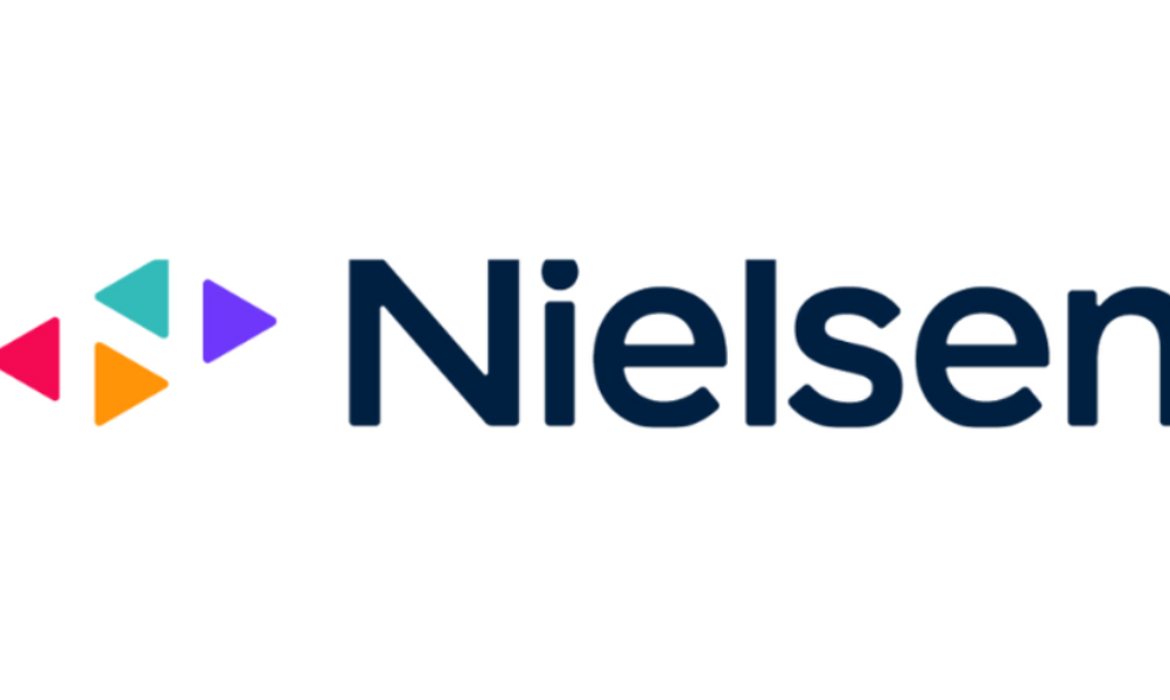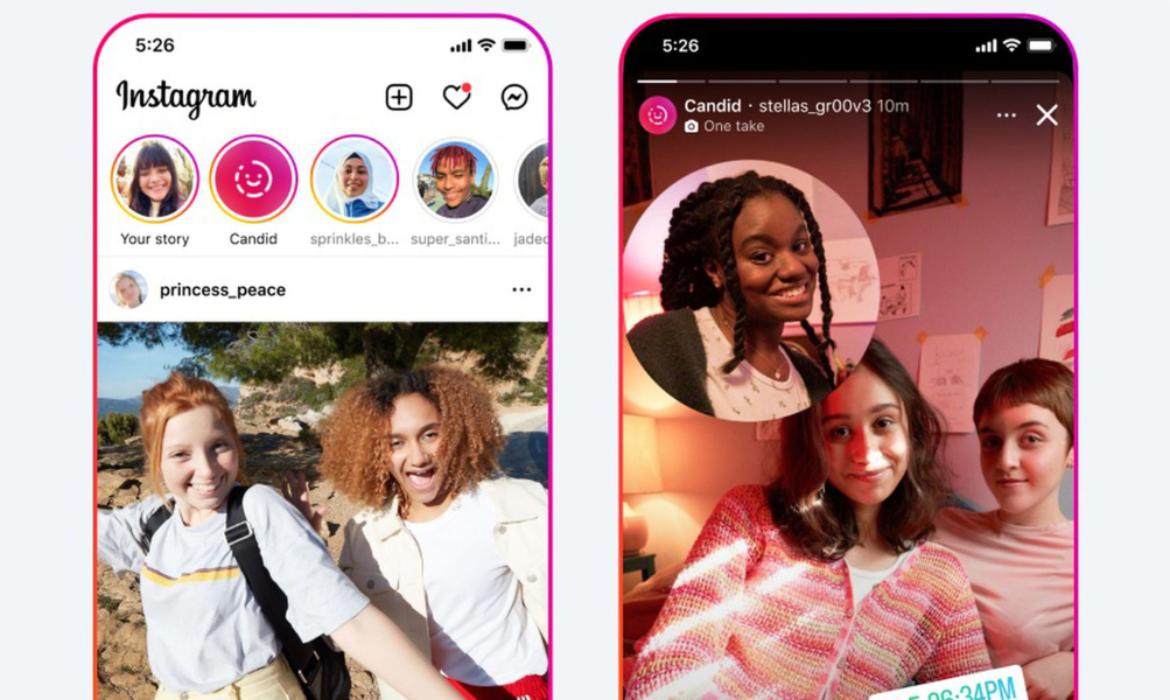TikTok Gets More Visual, Launches ‘Interactive Add Ons’ For In-Feed Ads
Earlier this week, TikTok announced it now offers interactive add-ons for in-feed ads to brands globally to help them make more engaging ads. The short-form video platform is adding a range of new ways to encourage engagement with the in-stream ads.
Interactive Add-Ons Categories
There are two types of interactive add-ons available for brands: standard and premium.
Standard Interactive Add-Ons: These add-ons are excellent for achieving lower-funnel marketing goals, such as generating clicks and conversations. It includes:

Display Card Ads
Display Card: Highlight important messages, share exclusive offers, and drive traffic to your website or app.
Gift Code Sticker.: Viewers can click for an exclusive promotional code and copy it before heading to purchase.
Voting Sticker: This allows companies to poll, quiz, or collect user feedback to encourage audience participation.
Countdown Sticker: Add a timer to your video ad to catch your audience’s attention for upcoming releases or important dates.
Premium Interactive Add-Ons: These add-ons can be used to achieve higher-funnel marketing goals such as brand awareness and community building.

Gesture Ads (via Tiktok)
Pop-out Showcase: This image element will lay over the ad with the ability to spotlight products through a pop-out element to drive clicks.
Gesture: A user can interact with the ‘Gesture reward card’ by tapping or swiping to obtain reward credits.
Super Like 2.0: This will be available soon, but it will allow for even more visuals after a user likes an ad.
These creative new ad enhancers are unique and exciting to add interactivity for more ad engagement. TikTok stated in their blog,
“Our research shows that 57% of viewers are more likely to search for brand information online when they connect with businesses on TikTok. Acting as an extension of your creative idea, Interactive Add-Ons offer flexible formats that encourage consumers to join in the fun when they see your ad.”
Interesting Read: Instagram Shuts Down IGTV For Longer Videos, TikTok Expands Video Length
Roku Is The New Player: A Look At Its Data Clean Room Strategy
Not to be left out, Roku this week dove into the data clean room. It will offer brands and agencies a way to collaborate with them using encrypted first-party data. The concept — built for streaming television — is intended to make planning and measuring campaigns easier without the use of cookies. With agency partners, Omnicom Media Group, Horizon Media, and Dentsu, the streaming TV platform announced the launch of its proprietary clean room offering. The product is based on Snowflake’s media and ad tech cloud data infrastructure.
A clean room is a place where publishers, platforms, and brands can safely and securely share first-party data in a way that can improve advertising effectiveness while still exerting strict controls over user privacy.
Interesting Read: Clean Rooms Explained: How Marketers Can Prepare For Cookieless World
Purpose-built for TV streaming
Roku’s clean room is purpose-built for TV streaming. The planning and measurement capabilities make it the only clean room to use audience data and linear TV data from direct consumer relationships on Roku, America’s No. 1 TV streaming platform.
The company explained in the press release to start with, an advertiser loads their data into a secure environment. Roku’s data clean room creates a secure connection between Roku data and the advertiser’s data. This enables brands to match their own data to Roku’s without sharing or exposing any personally identifiable information, all while protecting Roku users from direct identification. Advertisers can then query matched data and run their analysis within Roku’s clean room to understand potential campaign reach, current audience delivery, and advertising impact on product sales and sign-ups. OneView is also directly integrated with Roku’s clean room. Roku’s omnichannel demand-side platform (DSP) allows them to reach their audience across CTV, display, and mobile.
A look into Roku’s clean room
For instance, Foursquare, a leading location technology platform is a measurement and data partner for Roku’s clean room. The brands can better personalize and attribute their ad campaigns in OneView across devices and platforms.
The company’s first-party location data could be combined with Roku’s to target households in a certain area watching lifestyle and food programs or have people between the ages of 20 and 40 living there. Foursquare will provide the mobile location, but Roku can give behavioral and basic demographic information.
With a clean room, it is possible to match Roku-to-Foursquare audiences, but complex tracking can be layered into the campaign as well. Advertisers can use Roku data and Foursquare data to hone in on an anonymized audience segment in an area that meets their target requirements, then target that segment on Roku.
However, that is a one-time action item. If the advertiser wants to repeat the same activity a year after then it will have to resync the data as well as create a new list for a similar but distinct segment. On the contrary, in a clean room environment, the same type of audiences can be tracked over the years to understand sales and conversions. They can also determine what kind of streaming content causes transactions. This is advantageous for advertisers because a typical Roku ad purchase cannot be segmented based on the content viewed.
Interesting Read: End Of Third-Party Cookies, What Is There For Marketers: Takeaway!
Roku jumping on the bandwagon
The timing is not by chance. During the TV upfronts next month, Roku plans to test out several new services, including its clean room, with major advertisers. In a soon-to-be cookie-less world, data clean rooms are crucial to measuring advertising effectively. Louqman Parampath, VP of Product Management, Roku which has 60 million active accounts said,
The future of TV advertising won’t rely on fragile cookies or consortiums, but on direct connection with actual consumers. We are thrilled to help marketers accelerate their shift to TV streaming by putting privacy and transparency first.
He also added that cleanrooms are in the early stages, but are actively running campaigns.
We believe over time this will be the way first-party data will be used for connected TV.
Although the clean room isn’t a Nielsen alternative – advertisers and broadcasters are experimenting with alternate currencies and methods for measuring TV campaigns. It is perfectly positioned to fit into the trend of new TV attribution models.
Interesting Read: Disney Launches Clean Room For Marketers’ First-Party Data Needs
Video Amp Acquires Elsy to Automate And Simplify Media Measurement
VideoAmp has acquired the automated campaign management platform Elsy, a move designed to further scale and accelerate the adoption of its measurement and currency solution as an alternative to Nielsen. In this way, advertisers can optimize their advertising dollars by placing their commercials across multiple media platforms.
VideoAmp gained notable attention over the past few months for its collaboration with media agencies and TV networks working to measure video audiences, an increasingly difficult task. In its latest move, VideoAmp hopes to simplify that challenging task. However, the company did not disclose the terms of the deal.
VideoAmp uses cross-screen TV measurement and attribution technology and has been riding a wave of broadcaster discontent with Nielsen. However, clients need more than just a different currency. CEO Ross McCray of VideoAmp told Adexchanger that the feedback from the clients was that their methodology is too manual. Hence, it was taking too long for clients, especially on the buy side, to test and operationalize different metrics throughout the purchase funnel with their partners and, from there, plan media campaigns accordingly.
Within an increasingly fragmented media ecosystem, there is a growing need to centralize solutions and automate campaign planning. A particular challenge for marketers is measuring deduplicated reach and outcome-focused metrics, such as brand lift and sales.
Interesting read: Here, There, Everywhere, It Is Cross-Screen Advertising!
The rationale behind the acquisition is that it claims to be “measurement agnostic” and able to optimize across all media sources. Elsy will reduce latency and time-consuming manual operations, while also eliminating the disconnect of measurement from day-to-day decisioning, taking the guesswork out of the equation and providing a holistic understanding of a campaign in unprecedented ways. It will integrate with VideoAmp to algorithmically provide recommendations for media optimization. Its software tracks and analyzes campaigns through the entire funnel, ranging from reach, frequency, programmatic retargeting, and eCommerce conversions and sales. Elsy CEO and Co-Founder, Laurent Colard, now SVP of Product at VideoAmp said,
“The level of data-driven insight and guidance generated for media professionals when we pair our technology and algorithms with VideoAmp’s current planning, optimization and measurement software is something the market has not previously had access to.”
Use of alternate Currency is easier now
Consumers are migrating away from stand-alone linear TV and have adopted streaming, the on-demand video that might be watched on a service like Netflix or Paramount+, or via YouTube or a network’s own offerings. Currently, the job of measurement has become extremely crucial. Even Nielsen trying to gain back its industry accreditation for its national rating system while introducing a new product that it says will allow advertisers and television networks to do better targeting. Meanwhile, TV networks are linking up with companies like VideoAmp to develop “alternative currencies” to those long devised by using Nielsen ratings.
VideoAmp’s data is being tested by media agencies and programmers including Paramount and Discovery. McCray said that participants in the tests said that most of their time was spent manually inputting the new currency because their systems aren’t set up to handle it. Two things were requested- the ability to ensure results and budget tracking to support it. Cray explains how the acquisition will correct these problems,
“With this acquisition we’re doubling down on our position and saying we’re not only providing measurement, attribution and currency, but we’re also driving more of the automation for campaign management because that is going to accelerate the adoption of our measurement.”
Elsy will enable advertisers to forecast consumer activity and determine if they should move their ad money between different platforms. McCray stated to Adexchanger that “Currency is a nightmare to track manually.” The aim is to integrate “some of the material pieces of the workflow ” by next year, but “a good deal” will happen over the next six months.
Interesting read: New Video Game Measurement Allows Brands To Evaluate The Impact Of The In-Game Ads
New Video Game Measurement Allows Brands To Evaluate The Impact Of The In-Game Ads
Recent years have seen an upsurge in video game advertising, as unprecedented numbers of consumers have turned to video games to keep entertained during the COVID-19 outbreak. However, advertisement measurement standards haven’t kept pace with this fast growth. The prevalence of in-game advertisements has led brands and marketers to look at different metrics to determine their effectiveness.
So, was Frank Redhot’s recent appearance in a sports video game well-received? McCormick’s Frank’s Redhot brand placed banner ads inside Basketball Battle, a free-to-play mobile 2D basketball game. The banner advertisements were prominently displayed below the scoreboard at the center court.
Frameplay, a global leader in enabling intrinsic in-game advertising tracked the duration of time the player saw the ad. It recently introduced the first-to-market attention metric called Intrinsic Time-in-View. Attention is a key indicator of where advertisers should spend ad dollars, but how can it be measured? An understanding of the research and data can provide valuable insight into the future of advertising.
What is Intrinsic Time-in-View?
The Intrinsic Time-in-View metric from Frameplay measures how long an ad impression is visible during the gameplay. An impression is only considered viewable if it meets Frameplay’s viewability standards.
The in-game advertising platform measures the viewability of in-game ads using computer vision. It evaluates the total amount of time the ads are viewed throughout the campaign and the average amount of time each ad campaign is viewed per player session.
Interesting Read: Your Ultimate Guide to Understanding Gaming Advertising
Game-changing findings
Frameplay has joined forces with Lumen and eye square independently to analyze and compare its Intrinsic Time-in-View calculation with their respective eye-tracking measurement. It will validate whether Frameplay’s Intrinsic Time-in-View measurement is a viable measure of attention or not. Dentsu International, McCormick’s agency, also took part in the research as part of its Attention Economy initiative, which seeks to understand attention in this new format.
In fact, both computer vision and eye-tracking tech yielded similar results, supporting Frameplay’s method of measuring attention in games. The test also studied the effectiveness of in-game ads.
In-game ads captured about 1.4 times more attention of the gamers vs the mobile display attention norm. It performed similarly to social in-feed video norms and outperformed every other social, web, and mobile format, including a social in-feed image. In fact, eye square’s eye-tracking measurement concluded that Intrinsic Time-in-View turned out to be very close to the true real-life value. The ad framework satisfies the changing commercial and cultural needs of advertisers, companies, and gamers.

Image Credit: Advertising Week
Adexchanger reported that In-game ads generated an average of 2.4 attentive seconds per impression, on par with the attention generated from a social media video ad (even though the in-game ad was a static banner).
Joanne Leong, Dentsu’s VP and Director of Global Media Partnerships, stated that having a reliable metric to compare in-game ads vs social ads helps them decide where to spend the dollars.
“The average consumer sees over 4,000 ads in any given day, so it is imperative that advertisers start evaluating channels through the lens of attention metrics, which are more indicative of meaningful exposures. The results from these studies validate proven attention in Frameplay’s gaming inventory, and we will use this data in planning as we evaluate future intrinsic in-game opportunities.”
Interesting Read: InMobi And Anzu Partners To Bring Programmatic In-Game Ads To APAC Region
Setting up in-game advertising standards
Frameplay along with other players took a leadership position to update the guidelines with MRC and IAB so that intrinsic in-game advertising placements properly measure 3-D gaming environments. Ads are more difficult to measure than in other display formats because they are frequently obscured by game elements such as environmental features and player avatars.
Adexchanger quoted Frameplay Chief Strategy and Operations Officer Cary Tilds,
“When you calculate , there’s a lot to consider, like the size of the ad on the screen at any given time, the skew or the angle of the ad at any given time, obstructions between the player perspective and the ad and how lighting affects viewability.”
He also stated that more should be accounted for in any industry-wide in-game measurement standard in addition to all those factors. Frameplay wants advertisers to look at overall attention instead of the only time in view, and change how the ad tech industry thinks about viewability in the gaming sphere.
Considering that in-game advertising is one of the pillars of many companies’ marketing strategies, statistics like these show that it can be a valuable investment for companies looking to reach customers where they prefer. The data gives marketers leverage to understand and compare gaming to other mainstream channels.
Interesting Read: 5 Ad Industry Trends That Are Likely To Unveil in 2022!
Omnicom Media Group Sets Up Industry’s First Programmatic Private Marketplace
The Omnicom Media Group has launched the first programmatic private marketplace for point-of-purchase screens in the US, covering approximately 80,000 screens nationwide. Those screens are located across multiple points along with the in-store and to-the-store journey, including in-aisle cold case doors, check-out screens, entrance and open-air kiosks, EV charging stations, and gas pump screens.
Even though the pandemic of the last two years kept many people from going shopping, retailers and a host of place-based media companies have been investing millions in screens that are found in and near stores. OMG points to PWC research indicating that 48% of consumers still make purchases inside a physical store once a week and even 45% of most digitally-native consumers – Gen Z – were likely to shop in-store.
OMG’s new private marketplace went live on April 8 and includes inventory from retail vendors and networks. Companies like GSTV, Screenvwerse, Volta, Cooler Screens, Lightbox, NRS Digital Media, and Grocery TV continue to expand their network of screens, providing content and advertising to consumers. The company’s outdoor media group negotiated partnerships for OMG’s point-of-sale screen programmatic marketplace. OMG North America Chief Activation Officer Megan Pagliuca said,
“With this first-mover marketplace, we’re bringing the benefits of programmatic to the rapidly growing, highly effective and uniquely measurable environment of point-of-purchase screens. The positive impact will be seen at all stages of investment, from planning to content development to activation and measurement.”
Interesting Read: Omnicom Integrates With NBCU’s Clean Room Facility
Know the end-to-end impact
– This programmatic private marketplace enables OMG clients to have more control over which screens are next to their products in stores, rather than buying directly from the networks, which doesn’t guarantee proximity.
– OMG’s new marketplace provides its clients with a competitive advantage in leveraging the new and evolving formats being offered by retailers like Walgreens, CVS, Whole Foods, and many others.
– With the ability to reach these highly actionable consumer touchpoints programmatically, OMG clients can support the discovery of new and existing products and maximize contextual opportunities to ignite screen-level decisioning that drives incremental sales at a lower cost.
– OMG’s PMP for point-of-purchase screens will be incorporated into the inventory graph and activated within the Omni open orchestration platform that underpins all Omnicom agencies. As quoted by Digiday, Pagliuca said,
“The benefits of programmatic around measurement, targeting, ease of testing, etc., creates this massive opportunity for brands to be able to drive ROI by reaching consumers, right when they’re about to purchase and when they’re near the product in the store.”
From Last Mile to Last Aisle: Partner Perspectives
Digiday reported that the media agency network has 90-day exclusive access to programmatic inventory with Cooler Screens, 90-day “first-priority access” to Volta, and “first-priority access” to native content with Grocery TV, along with non-exclusive access to programmatic inventory from GSTV, Lightbox, NRS Digital Media, Velocity, Screenverse, and Starlite. The media partners in the deal with OMG believe they do solve some of those issues.
“The partnership between Cooler Screens and OMG provides a unique trifecta where all parties benefit,” said Cooler Screens co-founder and CEO Arsen Avakian.
“Consumers receive contextually relevant content while they are in a shopping mindset in-store, empowering them to make better decisions. Retailers are able to modernize and activate their in-store experience and increase sales. Brands now have the opportunity to connect digitally and programmatically with consumers in-store when it matters most while also being able to measure online to offline performance.”
Looking at the opportunity specifically through the grocery category lens, Grocery TV Director of Ad Partnerships Nolan Johnson said,
“We recently surveyed grocery shoppers and discovered that 95% of them are still regularly going into physical stores to get their groceries. OMG’s new marketplace provides both endemic and non-endemic brands with the opportunity to bridge the gap between online and in-person retail media and capture attention in the real world.”
President Jill Schnitt also added,
“Working with the best technology enabled place-based inventory, we have an unprecedented opportunity to prove the impact of last mile/last aisle messaging on decisioning.”
Interesting Read: InMobi And Anzu Partners To Bring Programmatic In-Game Ads To APAC Region
An End To A New Beginning: French Websites Ordered To Stop Using Google Analytics
The French Data Protection Authority (CNIL) ordered three French websites to stop using the analytical audience site Google Analytics deemed to violate the General Data Protection Regulation (GDPR). The decision came to light, weeks after a similar groundbreaking decision by the Austrian Data Protection Authority. The websites have 30 days to comply or risk hefty fines up to €20 million, or 4% of the annual turnover.
Google Analytics allows you to track how many people go to your website by integrating it. For each visitor, a unique identifier is assigned. Google transfers this identifier (which is personal data) and the corresponding data to the United States.
CNIL received several complaints from NOYB about the transfer of data collected from their site visitors via Google Analytics to the United States. Max Schrems, chair of the European Center for Digital Rights (NOYB), sent these complaints to several data protection authorities (DPAs), including the Austrian and French DPAs, in 2020.
It’s no secret that many websites use Google Analytics to learn more about their audiences. With privacy laws tightening, especially across Europe, and the GDPR still being sorted out, there will be an increase in services flouting GDPR. A concern in a global economy is the potential for separate products for the EU and the U.S.
Interesting Read: 6 Data Privacy Trends To Look Out For In 2022!
Insufficient Measures under Schrems II
In the course of its evaluation, the CNIL reviewed the consequences of the Schrems II decision of the Court of Justice of the European Union on 16 July 2020, which rendered the Privacy Shield invalid. According to the Court of Justice of the European Union (CJEU), the personal information transferred to the United States could be accessed by American intelligence services if the transfers are not properly regulated.
DPA’s have concluded that transfers to the United States are currently not adequately regulated. As a matter of fact, it says that in the absence of an adequate decision, the transfer of data cannot take place without securing appropriate guarantees for this flow specifically.
However, soon it was found that this was not the case. In fact, Google has adopted additional measures to regulate data transfers when it comes to the Google Analytics functionality, but they are not sufficient to ensure data confidentiality. Therefore, French website users are exposed to risk if they use this service and their data is exported.
As a result, the first decision was issued by the Austrian DPA earlier in January, followed by the decision by CNIL in early February.
Is Europe banning Google Analytics?
The CNIL notes that as a result, the data of Internet users is transferred to the USA in violation of Article 44 GDPR. Therefore, the CNIL ordered the website manager to bring this processing in line with GDPR, so that either Google Analytics will not be used (under current conditions) or a new tool will be used that does not involve a transfer outside the EU.
The CNIL recommends that website measurement and analysis tools should only be used to produce anonymous statistics, thus absolving the controller of any consent requirements if the transfer is legal. It has launched an evaluation program to determine which solutions are exempt from consent. The French data protection authority has also issued other orders to website operators using Google Analytics. Max Schrems said,
“In the long run we either need proper protections in the US, or we will end up with separate products for the US and the EU. I would personally prefer better protections in the US, but this is up to the US legislator – not to anyone in Europe.”
The CNIL is widely regarded as Europe’s regulatory powerhouse. The Dutch regulator has already stated that it will follow in the footsteps of the CNIL. DPAs in Germany, Spain, Portugal, and Poland are expected to make similar decisions in the coming months, cracking down on illegal personal data transfer between the US and the EU.
Interesting Read: Amazon Blocks Google FLoC – Here’s Everything You Need To Know!
InMobi And Anzu Partners To Bring Programmatic In-Game Ads To APAC Region
InMobi, a leading provider of content, monetization, and marketing technologies that help businesses fuel growth has revealed a partnership with in-game advertising solution Anzu to provide its advertisers with direct access to Anzu’s global mobile programmatic inventory.
Anzu’s award-winning in-game advertising solution allows programmatic advertisers to run their banner and video ads via blended yet highly viewable IAB-compliant ad formats that sit on 3D objects like roadside billboards, stadium banners, and buildings. The ads are designed to complement the gameplay, respect gamers, and in many cases, make the gameplay experience more realistic.
The Anzu platform integrates with HUMAN for fraud detection; Comscore, Lumen, and Nielsen for brand lift measurement; and Kochava for data enrichment. Anzu and Moat have also brought in-game viewability measurement for the first time to the market, allowing InMobi’s advertisers to see in-game metrics when programmatically displaying ads in-game.
Interesting Read: Is Measurement Giant Nielsen $16Bn Buyout A Hope For Turnaround?
Reaching out to the APAC region
Anzu’s SDK will now be available to InMobi-partnered game developers, including Ubisoft, MyGames, and Sir Studios
Itamar Benedy, Co-Founder and CEO of Anzu said,
“I’m excited that this partnership with InMobi will help many more APAC advertisers experience the huge opportunity that in-game advertising presents. InMobi’s expertise and vast advertiser network, combined with their knowledge of the APAC landscape, will help supercharge our solution within this market. There are more gamers in APAC than anywhere else in the world, and our solution will help brands to reach them in a non-disruptive, brand-safe way that compliments the gaming experience.”
InMobi’s direct connections with demand-side platforms around the globe and direct supply to Anzu’s global inventory help advertisers take advantage of these ad experiences via optimized supply routes. InMobi will be able to open up an array of mobile games across a wide range of genres with Anzu’s inventory, allowing advertisers to reach players in immersive environments.InMobi will be able to offer an array of mobile games across a wide range of genres with Anzu’s inventory, allowing advertisers to reach players in immersive environments.
Kunal Nagpal, Senior Vice President and General Manager of Publisher Platform and Exchange at InMobi said,
“InMobi’s preferred in-game advertising partnership with Anzu, co-funded by the world’s largest advertising agency WPP, allows our clients to seamlessly connect with gamers through integrated, non-disruptive ads.This partnership is beneficial to all parties, with new features and the goal to drive connections between consumers and brands with Anzu’s premium technology.”
New mobile game downloads have risen by 45% from pre-pandemic levels since the Covid-19 pandemic onset. In APAC, gaming app consumption has doubled year over year, indicating a shift toward making gaming a part of everyday life. The mobile-first region is known for its strong preference for smartphone gaming with on-the-go convenience and entertainment – resulting in over 1.5 billion mobile gamers. With the rise of the metaverse and the thriving communities in the region, gaming gives marketers a clear, accessible path to the metaverse to reach their audiences effectively.
InMobi recently launched its independent mobile mediation platform, Meson, to allow publishers to control and manage their data and monetization.
Interesting Read: Walmart Connect: Walmart’s Ambitious Advertising Plans For Its Programmatic Platform
VIZIO Launches Jump Ads to Connect Linear TV With Streaming
VIZIO introduced a beta program for an innovative new cross-platform viewing solution called Jump Ads, designed to bridge the gap between linear TV and streaming services.
According to research by Accenture, 60% of viewers are frustrated with the process of navigating between different streaming services and apps. Using this new ad format, content providers can present an interactive overlay that directs viewers to an app on VIZIO’s SmartCast platform. As a result, users have the option of continuing to watch content without having to look for something else afterward.
Interesting Read: A Look Ahead: Convergence Of Linear TV And Digital TV Advertising
FOX is the first company to test Jump Ads with its new series Welcome to Flatch, which concludes the premiere episode with Jump Ads. Upon viewing the premiere episode, viewers will be prompted to watch additional episodes of the program. They can also catch up on past episodes on the FOX Now app.
As a platform that encourages and increases viewership across formats, Jump Ads gives content providers a new way to engage viewers beyond a linear session through the ability to fully control and customize the user journey across platforms. This includes, for example, the option of choosing when the ads will appear, how often they appear, and even which application they will point to. Currently, VIZIO is working on multiple integrations with brands and content providers.
Interesting Read: All You Need To Know About Connected TV Advertising!
Adam Bergman, VP of Sales at VIZIO Ads said,
As the provider of both the TV hardware and software, VIZIO is in a unique position to create an environment that reduces friction and increases usability. Jump Ads represent yet another step in VIZIO’s ongoing mission to unify the smart TV experience with features that benefit viewers, content providers, and advertisers.
Natalie Park, SVP, Marketing Strategy, and Media at FOX Entertainment added,
Clearly, the viewing experience has changed, with both linear and streaming playing an integral role for the foreseeable future. Innovations like Jump Ads that integrate these formats for viewers create a better live, tune-in experience that caters to the on-demand expectation that the binge-watching cultural phenomenon has created.
Interesting Read: Connected TV Explained: The Essential Glossary Of CTV
Nielsen Introduces Nielsen Identity System for Digital Ad Ratings in India
Nielsen has announced the launch of its Nielsen Identity System in India. The company will enhance its open web methodology in India for digital ad ratings through the identity system alongside seven other markets: Germany, Australia, Japan, Spain, Indonesia, Canada, and Brazil.
How will the Nielsen Identity System help advertisers in India?
The India launch of the Nielsen Identity System follows the successful launches in Italy, France, and the UK last year. Through this, advertisers and publishers are able to measure the reach and frequency of their audiences, by removing demographic data duplication across mobile and PC platforms, allowing them to track accurate people-based metrics when a digital advert is viewed. Using both Nielsen’s and third-party providers’ data, the system will link digital ad impressions on the open web with Indian demographic data.
In India, it is powered by more than 700 million device identifiers in a privacy-centric manner. Nielsen will continue to work and expand its relationship with global and local data providers to increase coverage within the Nielsen Identity System. In addition to Nielsen’s unique data assets, and advanced machine learning models, these strategic relationships make Nielsen a leader in digital ad measurement in India and globally.
The company will introduce the identity system in Singapore, Mexico, Thailand, The Philippines, and Hong Kong in May. This launch is one of many steps in the company’s global Nielsen ONE strategy, the future of cross-media measurement.
Interesting Read: Is Measurement Giant Nielsen $16Bn Buyout A Hope For Turnaround?
And that’s what they said
Dolly Jha, Nielsen India’s Managing Director said,
We’re leading the way in tackling digital consumer behaviour fragmentation. From granularity, to large-scale measurement, we’re delivering actionable insights to help advertisers measure, manage and optimise their campaign budgets and results.
Sarah Miller, SVP, of product management, at Nielsen said,
With this enhancement to our Identity System we are taking another step to assure the continuity of ad measurement amidst the rapidly evolving digital ecosystem.
Because of Nielsen’s unique data assets, we are not only able to adjust and correct licensed third party demographic data using panels, we have also developed sophisticated machine learning algorithms to cluster digital identifiers into people and correct for any possible imbalances from the market’s universe of users. It is this advanced data science methodology fueled by the sheer volume of Nielsen Identities that will empower the digital ad measurement into the future.
Interesting Read: Here, There, Everywhere, It Is Cross-Screen Advertising!
Meta Makes Instant Messaging Fun, Launches New Features On Instagram
Meta introduced seven new messaging features to Instagram. The social media giant aims to make more investments in messaging to help users connect in a seamless way. In the new update, Meta is focused on Direct Messages and has rolled out only in select countries. It will make it available globally later.
Interesting Read: Instagram Rolls Out Ad Feature To The Shops Tab Globally
New Instagram Features can help users browse and chat at the right time. It also customizes message threads.

Image Credit: Meta
Browse and reply: Received a direct message (DM) while browsing? Tap the in-app notification to bring up the Reply text box. IT allows you to compose a reply and send it without having to navigate to the Inbox. This feature only seems to support text responses at present.
Quick DM’s: Reshare Instagram interesting content which can be a meme, video, or photo instantly just by tapping and holding the share button.
Who’s online: Bored and wondering who to chat with? Look no further than Instagram! Newly added to your Inbox is a horizontal list of all your online friends.

Image Credit: Meta
Song Preview: Can’t the song out of your head? Share it with your connections. The latest feature is enabled by integrations with Apple Music, Amazon Music, and Spotify. You can send a 30-second song preview to your friends to listen directly in the DM.
Silent Messages: Send messages without disturbing friends during the night or when they’re busy by adding “@silent” to your message. It’ll not notify them but just sit there patiently waiting for them to eventually check their Inbox.
Lo-Fi: The new lo-fi chat theme makes your conversations feel more personal and chill.
Group Polls: Deciding on a meal plan or meet-up with friends? The new chat feature on Instagram allows creating a poll directly in your group chat.
Instagram is steadily becoming a more reliable Instant Messaging (IM) platform with these new features and additions. As Meta already supports cross-messaging between Facebook and Instagram, it only makes sense that something of the former should be added to the latter. This can only unify the two and smooth out the irregularities that cause them to be uniquely distinct.
Interesting Read: Meta Taps Zefr For Brand Suitability And Improve Advertising Safety Tools











